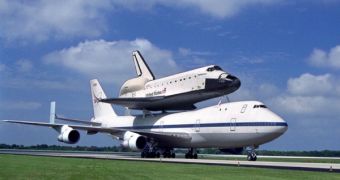The retirement of the American space shuttle fleet, scheduled for the fall of 2010, sparks more debate than anyone would have thought. Aside from the debate on whether the decision to retire the three ships is wise or not, now numerous controversies have sparked on what to do with the ships once they are permanently grounded. Several museums have already expressed interest in acquiring a shuttle each, as have community groups in various cities involved in the construction of the ships themselves, or at least parts of them. A group in Florida is currently gathering supporters to request that at least one of the three ships remains at the Kennedy Space Center (KSC) Visitor Complex.
Atlantis, Discovery and Endeavor are the remaining shuttles, following the disaster that struck Challenger in 1986 and Colombia in 2003. Therefore, they are considered to be of a significant tourist attraction in any museum they might be exposed in. At this point in time, the Smithsonian Air & Space Museum in Washington, DC, and the National Museum of the U.S. Air Force at Wright-Patterson Air Force Base in Dayton, Ohio are expected to compete hardest for one of the ships.
The Museum of Flight in Seattle, NASA's Johnson Space Center in Houston, and Marshall Space Flight Center in Hunstville, Alabama, are also thought to wage in on the bid to have a shuttle transferred to their respective locations. But the Florida group says that it would be only natural for one of the ships to remain at the Kennedy Space Center, from which so many missions took off. However, representatives of the group say it would be stupid for them to just expect one shuttle to be left there, and not take aggressive action to ensure that happens.
"It's clear that everyone thinks it would be an absolute sin if we did not have a space shuttle here for display. And we absolutely cannot take for granted that we are going to get one. We can't just assume that one of them is automatically ours," argues Melbourne aerospace industry veteran Jim Banke, the organizer of the local effort.
The space agency estimated that it would cost in the vicinity of $42 million to make a single shuttle ready for safe exhibition. The propellants and other toxic chemicals on board will be removed for the price of $28.2 million, while transport and “cosmetics” before the exhibit will cost an additional $14 million.

 14 DAY TRIAL //
14 DAY TRIAL //